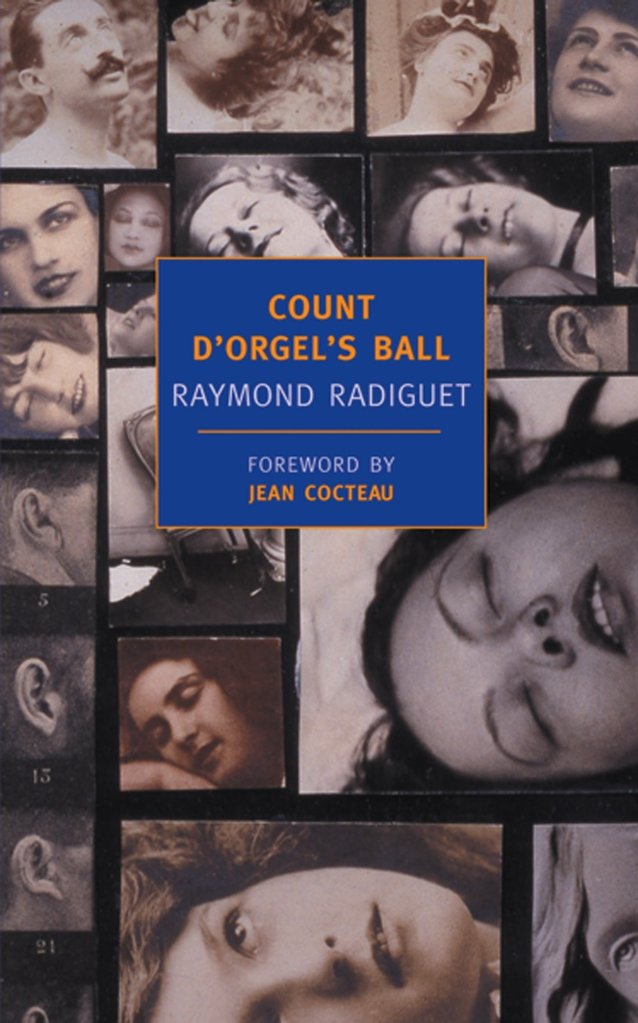Count d’Orgel’s Ball – Raymond Radiguet (1924, trans. 1989 Annapaola Cancogni) 160 pages
Raymond Radiguet was only twenty when he died, having published two novels, of which Count d’Orgel’s Ball was the second, some poetry and a play. He had led a life that brought him into contact with the foremost artists of the day, including Picasso and his lover Jean Cocteau, who wrote the foreword to the NYRB Classics edition I read.
This made me a bit trepidatious in approaching this novella, wondering if it was a piece of juvenilia that wouldn’t have otherwise garnered much attention. But I shouldn’t be so ageist, because I really found a lot to enjoy in Count d’Orgel’s Ball.
It tells the story of a love triangle amongst the beautiful and privileged in the 1920s. Mahaut is from an old family, and desperate for love when she marries young:
“She recovered some of the freshness of her early childhood when, at eighteen, she married Count Anne d’Orgel, one of our country’s best names. She fell madly in love with her husband who, in return showed her much gratitude and the warmest friendship, which he himself took for love.”
She adores her sociable and brilliant husband, who is fairly harmless but entirely vacuous:
“Nobody knew the reason for his prestige or, at least, for his brilliant reputation. His name had little to do with it since talent comes first even amongst those who worship names.”
Into their world comes François de Séryeuse, a young man not entirely enthralled by the Count’s charm and prestige. This works in his favour and the three spend more and more time together.
“He [the Count] adopted people more than he made friends with them. In return, he demanded a lot. He wanted to lead the way, to be in control.”
The Count doesn’t sustain control though, as François and Mahaut fall in love. For me this was the weakest point of the novella. Radiguet is excellent at observing people and social situations; he is incisive regarding pretention and social mores. Where the story falters for me is in creating fully rounded characters and the emotional ties between them. But perhaps I’m being unfair, as Radiguet is describing a world filled with shallow and/or naïve people. He doesn’t view them as having great emotional depth:
“It would be safe to say that François’ ideas on love were ready made. But since he had made them himself, he believed they were cut to size. He did not realise he had cut them out of limp feelings.”
The writing style is fluid and often scathing. It’s so readable and entirely unflinching in its view of a particular part of society at a particular time.
I thought there were a few rough edges at points in Count D’Orgel’s Ball; a tendency to tell rather than show, and characters as vehicles for social satire rather than fully recognisable people. But these are little quibbles and having written this novella at nineteen, I can only wonder what Radiguet would have achieved had he lived longer.
“Happiness is like good health: one is not aware of it.”

That last quote is astonishingly mature for a nineteen-year-old but presumably he was very much aware of his own mortality.
LikeLiked by 1 person
It really is amazing that he wrote this at such a young age. He died from typhoid after eating oysters, so I think his death was unexpected and a real shock to those who knew him. Cocteau says that three days before he died, Radiguet knew he’d die on the third day. It’s tragic.
LikeLiked by 1 person
Oh, now I’m intrigued. I know I have some very old copies of his books somewhere but I can’t recall which ones. Off to have a search!!
LikeLiked by 1 person
Fabulous! Hope you locate them Kaggsy.
LikeLiked by 1 person
Looking at his wiki entry, it seems he lived more life in his short twenty years than most of us do in our three score years and ten. Perhaps that why you found him more mature than anticipated.
LikeLiked by 1 person
Yes could be! He does sound extraordinary.
LikeLiked by 1 person
i might be the biggest fan of this series
LikeLiked by 1 person
Glad you’re enjoying it Erin 🙂
LikeLiked by 1 person
I don’t remember hearing about this author before, the quotes you’ve provided are great clearly the early work of an excellent writer, despite that tendency to tell rather than show.
LikeLiked by 1 person
I hadn’t heard of him either Ali. It’s very sad to think what he may have achieved given his evident talent.
LikeLike